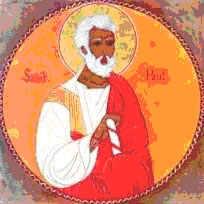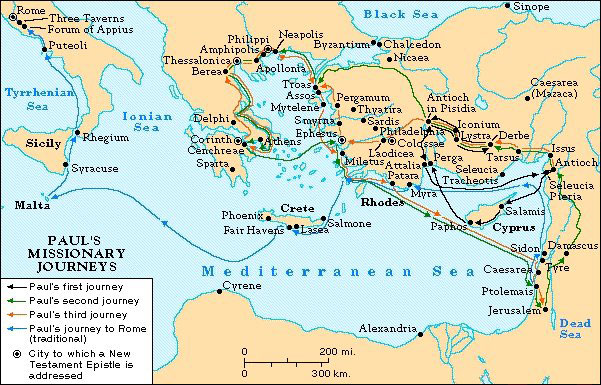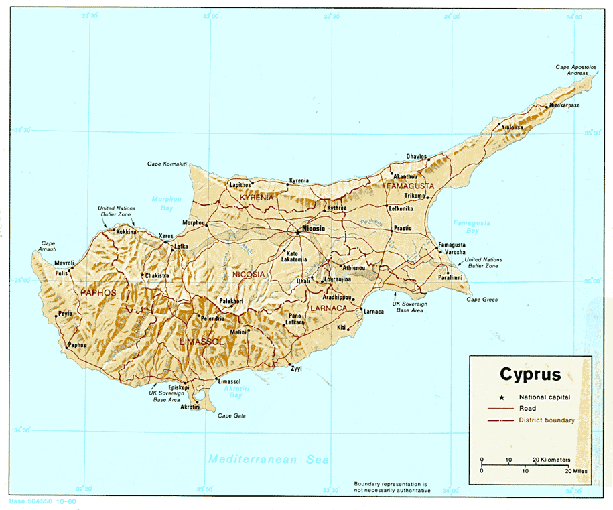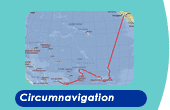 Of all the apostles, Paul stands out as the one who was the traveler par excellence. His journeys through the length and breadth of the ancient world are nothing short of remarkable and given the difficulties of traveling in these times, let alone the animosity and danger he faced trying to convert populations to the new faith, it is a credit to the endurance and tenacity of the man that he accomplished as much as he did. Paul, originally Saul, was born in Tarsus in what is now southern Turkey and changed his name after converting Sergius Paulus. He is traditionally represented as a stocky little man, with a bald head and a grey, bushy beard. He studied Jewish law in Jerusalem under the famous rabbi Gamaliel (Acts 22:3). He and his parents were Roman citizens, having special rights and privileges. Roman citizens could not be imprisoned without a trial nor could they be scourged or crucified. His Roman citizenship saved Paul many times during his ministry. He made three great missionary journeys before being arrested in Jerusalem and taken to Rome where he was beheaded in AD 62.
Of all the apostles, Paul stands out as the one who was the traveler par excellence. His journeys through the length and breadth of the ancient world are nothing short of remarkable and given the difficulties of traveling in these times, let alone the animosity and danger he faced trying to convert populations to the new faith, it is a credit to the endurance and tenacity of the man that he accomplished as much as he did. Paul, originally Saul, was born in Tarsus in what is now southern Turkey and changed his name after converting Sergius Paulus. He is traditionally represented as a stocky little man, with a bald head and a grey, bushy beard. He studied Jewish law in Jerusalem under the famous rabbi Gamaliel (Acts 22:3). He and his parents were Roman citizens, having special rights and privileges. Roman citizens could not be imprisoned without a trial nor could they be scourged or crucified. His Roman citizenship saved Paul many times during his ministry. He made three great missionary journeys before being arrested in Jerusalem and taken to Rome where he was beheaded in AD 62.
Saul witnessed the stoning and death of Stephen, the first Christian martyr, and guarded the clothes of his executioners (Acts 7:58). He then started persecuting the Christians and imprisoned many of them (Acts 8:3). The followers of Jesus Christ were regarded as heretics by the Pharisees. The persecution in Jerusalem caused the believers to disperse abroad and preach the Word everywhere they went (Acts 8:4).
Saul planned to persecute Christians even abroad. He obtained letters to the synagogues in Damascus from the high priest in Jerusalem, and set out to bring Christians bound from there to Jerusalem. On the road to Damascus the most famous conversion in the history of Christianity took place, described in Acts, chapters 9,22 and 26. At midday, light shone down suddenly from heaven, encompassing Saul. He heard Jesus Christ's voice, "Saul, Saul, why persecutest thou me?" This man who hated Christ and all Christians capitulated in the front of the living God. Then Jesus told him to go into Damascus, and there he would be told what to do. Paul became blind and did not eat or drink for three days. In Damascus, the Lord sent a disciple called Ananias to him, who restored his vision, filled him with the Holy Spirit and baptized him. (After his conversion, Saul is mentioned in the Bible by his Latin name, Paul.) He then began to preach about Jesus in the synagogues in Damascus. The Jews wanted to kill him, but he escaped with the help of some Christians who lowered him in a basket from the top of the city wall.
Paul went away to Arabia for a period of time, then returned to Damascus (Gal. 1:17), and after three years journeyed to Jerusalem (Gal. 1:18). The disciples there did not trust him, knowing he had previously persecuted Christians, but Barnabas took him to the apostles who were staying in Jerusalem at that time (Gal. 1:18-19, Acts 9:26-27). Paul preached boldly in Jerusalem, but after 15 days had to flee again, this time to Tarsus (Acts 9:29-30).
In Antioch, the capital of Syria then, Gentiles were turning to Jesus Christ, and the church in Jerusalem sent Barnabas there to instruct these new believers. Barnabas in turn took Paul from Tarsus to be his companion (Acts 11:19-25). The disciples were first called Christians in Antioch (Acts 11:26). Christians in Antioch sent relief funds by Barnabas and Paul back to Christians in Judea (Acts 11:27-30). They returned with young John Mark, Barnabas' nephew from there (Acts 12:25).













